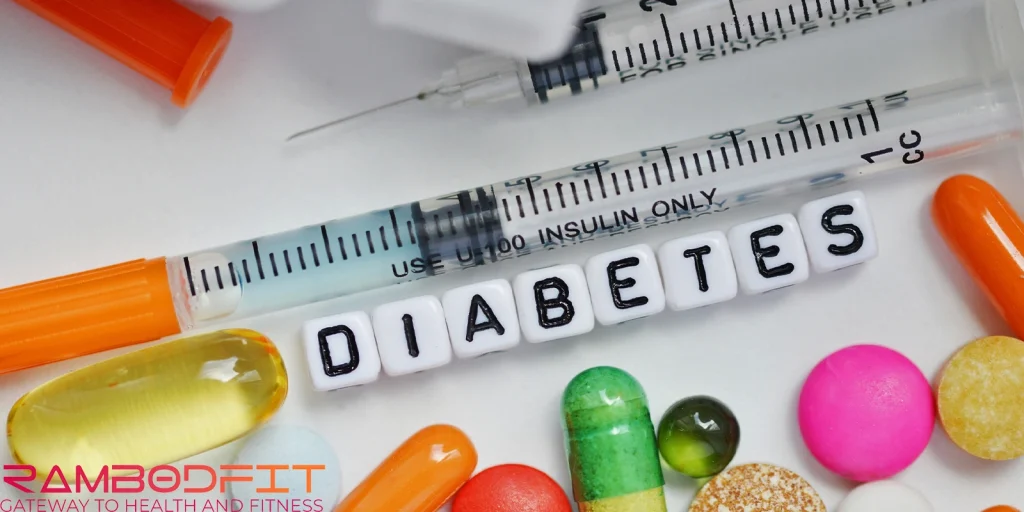


Chromium for athletes is a vital trace element crucial for our body’s metabolic processes. It’s super important for how insulin works, helping our body manage carbs, fats, and proteins. This has made nutritionists and researchers pretty interested in it over the last few years.
Lots of folks have started taking chromium supplements, like chromium picolinate, because they think it’ll help control their blood sugar and help them lose weight. But experts haven’t reached a consensus yet—some studies are thumbs-up, while others are not so much.
We’ve done a detailed review looking at chromium’s biology on RambodFit, checking out studies on how it messes with blood sugar and body makeup, thinking about whether it’s safe, and offering up tips for when you might want to add it to your routine.
Table of Contents

The Different Types and Where You Get Them
So, chromium comes in a few different forms. The one you want in your food and pills is trivalent chromium (Cr³⁺); it’s the good stuff doing the work in your body. But stay away from the hexavalent kind (Cr⁶⁺)—it’s bad news from factories and stuff, like super toxic and can cause cancer.
Foods with three-valent chromium for athletes have stuff like whole grains (wheat germ’s a big one), broccoli, green beans, nuts (you want to look at Brazil nuts), meats (think beef and chicken), dairy goodies, and some seasonings (like black pepper and thyme).
We eat about 20-40 micrograms of this stuff a day from our grub, but the way food gets all processed and refined can slash the chromium bits.
When we talk about what chromium does in our bodies, we’re looking at how it helps insulin work better, deals with sugar, and manages fats. This tiny element becomes super important when the body is working overtime, like when you’re pregnant, have been injured, or you’re pushing it with workouts.
Type 2 Diabetes
In a 2020 study reviewing 28 trials with more than 2,000 people, researchers found small yet meaningful drops in HbA1c and fasting sugar amounts. These benefits got stronger when doses went up, when they hit 400 mcg/day or more. People with not-so-great sugar levels saw the most improvements.
Gestational Diabetes
New research is showing that chromium for athletes might help lessen morning and after-meal sugar levels, cut down on how much insulin people need, and reduce the risk of having a big newborn.
Mechanistic Insights
It looks like chromium for athletes does some good stuff for the pancreas, the β-cells, and it also helps ease oxidative stress in areas sensitive to insulin. Plus, it does something to change how inflammatory stuff in the body behaves.

People who lack chromium see more significant effects. For chromium to work well, you need enough vitamin D and magnesium. You can safely and benefit from taking 200-1000 mcg a day.
Chromium for Losing Weight and Improving Body Shape
Analyzing Clinical Trials Together
They looked at 10 clinical trials in which no one knew who was getting what, and found that people lost about 1.1 kg more than those who didn’t take anything. There was a slight drop in body fat but no big change in muscle. Taking around 400 mcg a day seems to be where it stops getting better.
How It Might Do Its Thing
Chromium might play a role in controlling hunger by affecting the way serotonin and dopamine work in the brain. It could cut down on how much people want carbs and up their metabolism while resting. Plus, it makes insulin do its job better, so you don’t gain weight back after a diet.
Limits and Hot-Button Issues
Studies paid for by companies tend to show bigger benefits. Chromium seems to do more for folks who eat a lot at once or have problems with insulin. But the weight loss of 1-2 kilos isn’t much when you stack it up against changing your whole way of living.
Not-So-Good Reactions
Headaches, feeling dizzy, and an upset belly often happen as side effects. Allergy flare-ups and low blood sugar for those with diabetes are pretty rare. People worry, though, about kidney damage if someone’s taking a lot of it, like more than a thousand micrograms a day.
Mixing Meds
If you’re taking insulin or something called sulfonylureas, chromium might make them work harder. It can also mess with how well your body handles levothyroxine and could cause your body to toss out more stuff when you’re on painkillers like NSAIDs.
What the Big Shots Think
So, the FDA’s all “Yeah, chromium’s cool, no sweat,” but the folks over at EFSA say grown-ups should take just 25 micrograms a day to keep things good.

Chromium for athletes might offer slight advantages for people with insulin resistance, yet it doesn’t do much for controlling weight. If you take 200-400 mcg of chromium picolinate daily along with some vitamin C, it might help in handling diabetes better because vitamin C boosts how well your body absorbs it. However, if you’re already on meds for diabetes, you’ve got to watch your blood sugar levels like a hawk.
Looking Ahead at Research
It’s a good idea for upcoming research to dig into tailoring nutrition based on what your chromium levels look like, if it’s safe over the long haul, and how it works when you mix it with other stuff that helps insulin do its job.
Take a look at a few articles below about supplementation and nutrition:
Well, picolinate kind of gets into your system better, but nicotinate might be easier on you. They’re pretty much neck and neck in terms of how well they work, though.
Chromium should not step in for prescribed diabetes treatments. You can add it to therapy, but don’t do it without a doctor’s watch. Chromium for athletes can already stop diabetes from happening.
You might notice a change in blood sugar levels in 4-8 weeks. Dropping pounds, though, could need more than 12 weeks to show up.